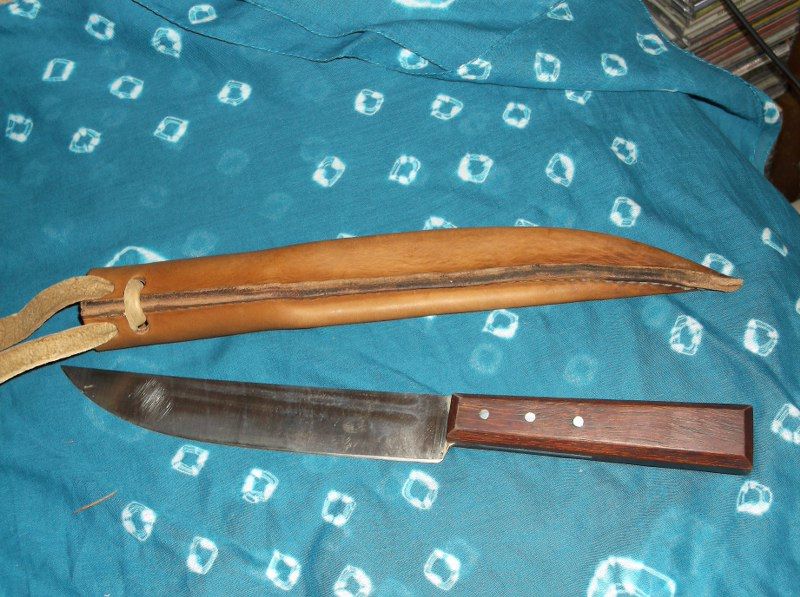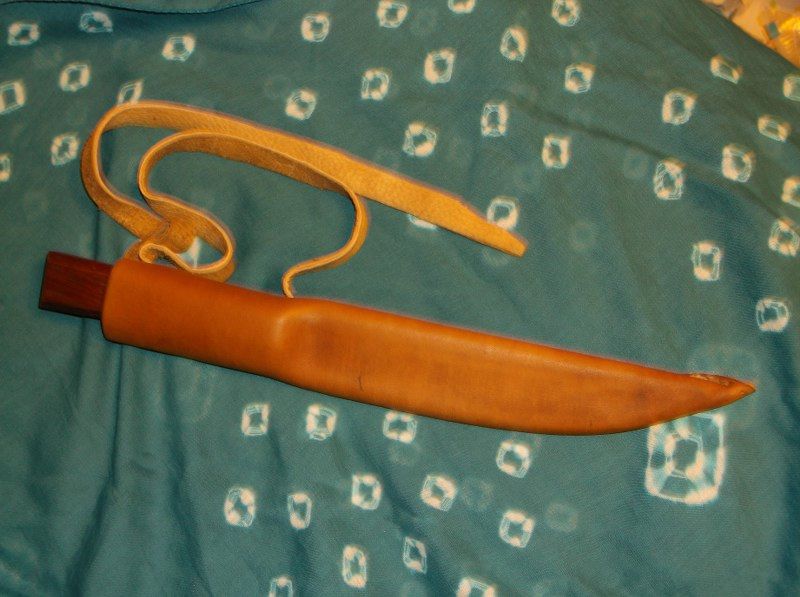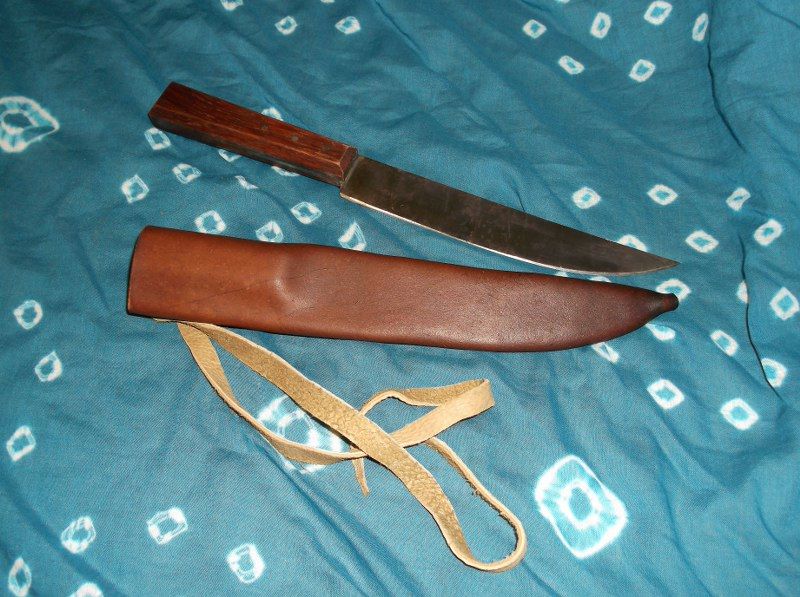Stophel
75 Cal.
- Joined
- Jul 8, 2005
- Messages
- 5,949
- Reaction score
- 858
This is my first center (almost) seam 18th century knife sheath. It's not fully dry yet, and I've not oiled or waxed it or anything. The slight upsweep of the English style blade made it difficult for me to get the leather twisted around and the seam centered on the back, but it's good enough, I think. It's more or less 6-7 oz cowhide that I dyed in walnut hulls. Sewn with waxed flax thread. I could perhaps have done a better job with it if I had really taken my time, but I was preoccupied and kind of rushed through it, but it's fine, considering it's just a cheap trade knife that would have been imported by the zillions in the mid to late 18th century.


not great photos, I know.
It actually wasn't too hard to do, and as I do more, and am more careful, I know I can do them better. If you can make a regular side seam sheath, and you have a vise to mash the seam flat, then you can make a center seam sheath. :wink:
And thanks to Wick for telling me once how he made his (mine is perhaps a bit more down and dirty... :grin: )
Oh, the knife is my "Red Handled Scalper", which I made from an Ontario "Hop Knife", which cost me something like $9 plus shipping. The handle I made from a piece of wood that looks to me like mahogany that I got from a pallet.


not great photos, I know.
It actually wasn't too hard to do, and as I do more, and am more careful, I know I can do them better. If you can make a regular side seam sheath, and you have a vise to mash the seam flat, then you can make a center seam sheath. :wink:
And thanks to Wick for telling me once how he made his (mine is perhaps a bit more down and dirty... :grin: )
Oh, the knife is my "Red Handled Scalper", which I made from an Ontario "Hop Knife", which cost me something like $9 plus shipping. The handle I made from a piece of wood that looks to me like mahogany that I got from a pallet.







